Psychology > TEST BANKS > Test Bank for Lifespan Development, 7th Canadian Edition by Denise Boyd (All)
Test Bank for Lifespan Development, 7th Canadian Edition by Denise Boyd
Document Content and Description Below
Test Bank for Lifespan Development, 7th Canadian Edition, 7ce by Denise Boyd,Paul Johnson,Helen Bee TEST BANK ISBN-13: 9780135286746 Full chapters included Chapter 1 Basic Concepts and Methods ... Learning Objectives The Scientific Study of Human Development Philosophical Roots Original Sin The Blank Slate Critical Thinking Innate Goodness The Study of Human Development Becomes a Science Darwin Hall Gesell Piaget A Brief History of the Roots of Developmental Psychology in Canada Contemporary Human Development The Lifespan Perspective The Domains of Development Continuity and Discontinuity in Development Universal Changes Group-Specific Changes Individual Differences Critical Thinking The Interactionist Model of Development Research Methods and Designs Relating Goals to Methods Describe Explain Predict Influence Research Methods for Identifying Relationships Between Variables Descriptive Methods Correlations Experiments Research Designs for Studying Age-Related Changes Cross-Sectional Designs Longitudinal Designs Sequential Designs Cross-Cultural Research Research Ethics Protection from Harm Informed Consent Confidentiality Knowledge of Results Deception Summary The Scientific Study of Human Development Contemporary Human Development Research Designs and Methods Chapter 2 Theories of Development Learning Objectives Biological and Evolutionary Theories Genetics Genotypes, Phenotypes, and Patterns of Inheritance Dominant and Recessive Genes Critical Thinking Polygenic and Multifactorial Inheritance Mitochondrial Inheritance Epigenetics Evolutionary Theories Ethology Behaviour Genetics Evolutionary Psychology Evolutionary Developmental Psychology Evolutionary Prenatal Programming and Adult Health and Disease Applying Biological and Evolutionary Theories Disease Control Early Intervention Psychoanalytic Theories Freud’s Psychosexual Theory Personality Development Five Psychosexual Stages Erikson’s Psychosocial Theory Eight Psychosocial Crises to Resolve Critical Thinking The Humanistic Alternative Motives Personal Growth Learning Theories Pavlov’s Classical Conditioning The Conditioning Process Early Conditioning Skinner’s Operant Conditioning Reinforcement Punishment Changing Behaviour Critical Thinking Cognitive Theories Piaget’s Cognitive-Developmental Theory Schemes Critical Thinking Stages Information-Processing Theory Memory Processes Memory Components Vygotsky’s Sociocultural Theory Social Interactions Build Cognitive Skills Bandura’s Social-Cognitive Theory Learning by Observing Reciprocal Determinism Self-Efficacy Systems Theory Bronfenbrenner’s Bioecological Systems Theory Macrosystem Exosystem Microsystem The Person Ecobiodevelopmental Theory Critical Thinking Comparing Theories Overview of Human Development Theories Summary Biological and Evolutionary Theories Psychoanalytic Theories Learning Theories Cognitive Theories Systems Theory Comparing Theories Chapter 3 Prenatal Development and Birth Learning Objectives Conception The Process of Conception Conception Multiple Births Assisted Human Reproduction Pregnancy and Prenatal Development The Mother’s Experience First Trimester Second Trimester Third Trimester Prenatal Development The Germinal Stage The Embryonic Stage The Fetal Stage The Fetal Brain Sex Differences Prenatal Behaviour Issues in Prenatal Development Genetic Disorders Autosomal Disorders Sex-Linked Disorders Chromosomal Errors Trisomies Sex-Chromosome Anomalies Teratogens: Maternal Diseases Viral Infections Teratogens: Drugs Prescription and Over-the-Counter Drugs Tobacco Alcohol Cannabis Illicit Drugs Teratogens: Other Harmful Influences on Prenatal Development Diet Age Chronic Illnesses Maternal Mental Health Teratogens: Mutagenic, Environmental, and Epimutagenic Mutagenic Teratogens Environmental Teratogens Epimutagenic Teratogens Paternal Influences: Preconceptual and Prenatal Fetal Assessment and Treatment Birth and the Neonate Birth Choices The Location of Birth Midwives Drugs During Labour and Delivery The Physical Process of Birth Caesarean Deliveries Birth Complications Assessing the Neonate Low Birth Weight Critical Thinking Summary Conception Pregnancy and Prenatal Development Issues in Prenatal Development Birth and the Neonate Chapter 4 Physical, Sensory, and Perceptual Development in Infancy Learning Objectives Physical Changes The Brain and the Nervous System Synaptic Development Myelinization Reflexes and Behavioural States Reflexes Behavioural States Critical Thinking Developing Body Systems and Motor Skills Bones Muscles Lungs And Heart Motor Skills Gender Differences Explaining Motor Skill Development Health Promotion and Wellness Nutrition Malnutrition Health Care And Immunizations Critical Thinking Illnesses In The First Two Years Preterm and Low-Birth-Weight Infants Post-Term Infants Infant Mortality in Canada Sudden Infant Death Syndrome Sensory Skills Vision Visual Acuity Tracking Objects in the Visual Field Colour Vision Hearing and Other Senses Auditory Acuity Detecting Locations Smelling and Tasting Senses of Touch and Motion Perceptual Skills Studying Perceptual Development Looking Early Visual Stimulation Depth Perception What Babies Look At Faces: An Example of Responding to a Complex Pattern Effects of Visual Deprivation Listening Discriminating Speech Sounds Discriminating Individual Voices Discriminating Other Sound Patterns Combining Information from Several Senses Explaining Perceptual Development Summary Physical Changes Sensory Skills Perceptual Skills Chapter 5 Cognitive Development in Infancy Learning Objectives Cognitive Changes Piaget’s View of the First Two Years Sensorimotor Stage Object Permanence Imitation Challenges to Piaget’s View Critical Thinking Object Permanence Imitation Alternative Approaches Learning, Categorizing, and Remembering Conditioning and Modelling Critical Thinking Schematic Learning Memory Measuring Intelligence in Infancy Critical Thinking The Beginnings of Language Influences on Language Development Early Milestones of Language Development First Sounds and Gestures Word Recognition The First Words The First Sentences Individual Differences in Language Development Differences in Rate Language Development Across Cultures Summary Cognitive Changes Learning, Categorizing, and Remembering The Beginnings of Language Chapter 6 Social and Personality Development in Infancy Learning Objectives Theories of Social and Personality Development Psychoanalytic Perspectives Ethological Perspectives Attachment The Parents’ Attachment to the Infant Critical Thinking The Infant’s Attachment to the Parents Establishing Attachment Attachment Behaviours Variations in Attachment Quality Secure and Insecure Attachments Stability of Attachment Classification Attachment And Autism Spectrum Disorders Caregiver Characteristics and Attachment Emotional Responsiveness Tactile Responsiveness Marital Status Mental Health Long-Term Consequences of Attachment Quality Personality, Temperament, and Self-Concept Dimensions of Temperament Origins and Stability of Temperament Genetic and Epigenetic Factors Critical Thinking Neurological Processes Interpersonal Milieu Long-term Stability Self-Concept The Subjective Self The Objective Self The Emotional Self Awareness of the Intentions of Others Effects of Nonparental Care Difficulties in Studying Nonparental Care Effects on Cognitive Development, Peer Relations, and Attachment Summary Theories of Social and Personality Development Attachment Personality, Temperament, and Self-Concept Effects of Nonparental Care Chapter 7 Physical and Cognitive Development in Early Childhood Learning Objectives Physical Changes Growth and Motor Development The Brain and Nervous System Lateralization The Reticular Formation and the Hippocampus Handedness Health Promotion and Wellness Sleeping, Eating, and Activity Patterns Critical Thinking Accidents Adverse Childhood Experiences (ACEs) in Canada Patterns of Adversity Risk Factors Critical Thinking Outcomes Preventive Measures Cognitive Changes Piaget’s Preoperational Stage Challenges to Piaget’s View Egocentrism and Perspective Taking Appearance and Reality Theories of Mind Understanding Thoughts, Desires, and Beliefs Influences on the Development of a Theory of Mind Alternative Theories of Early Childhood Thinking Information-Processing Theories Vygotsky’s Sociocultural Theory Changes in Language Fast-Mapping The Grammar Explosion Inflections Questions and Negatives Overregularization Complex Sentences Phonological Awareness Language and Numeracy Differences in Intelligence Measuring Intelligence The First Tests Modern Intelligence Tests Predictive Value and Stability of IQ Scores Limitations of IQ Tests Critical Thinking Origins of Individual Differences in Intelligence Evidence for Heredity Evidence for Family Influences Evidence for Preschool Influences Readiness to Learn at School Combining the Information Summary Physical Changes Cognitive Changes Changes in Language Differences in Intelligence Chapter 8 Social and Personality Development in Early Childhood Learning Objectives Theories of Social and Personality Development Psychoanalytic Perspectives Social-Cognitive Perspectives Person Perception Understanding Rule Categories Understanding Others’ Intentions Family Relationships and Structure Attachment Parenting Styles The Authoritarian Type The Permissive Type The Authoritative Type The Uninvolved Type Canadian Parenting Styles Critical Thinking Parenting and Child Discipline Ethnicity, Socioeconomic Status, and Parenting Styles Family Structure Family Structure Effects Other Types of Family Structures Divorce Understanding the Effects of Family Structure and Divorce Critical Thinking Peer Relationships Relating to Peers Through Play Aggression Patterns in Aggression At-Risk Factors Origins of Aggression Critical Thinking Prosocial Behaviour and Friendships Development of Prosocial Behaviour Parental Influences on Prosocial Behaviour Friendships Personality and Self-Concept From Temperament to Personality Self-Concept The Categorical Self The Emotional Self The Social Self Gender Development Explaining Gender Concept and Sex-Role Development Social-Cognitive Explanations The Cognitive-Developmental Explanation The Information-Processing Approach Biological Approaches Sex-Role Knowledge Sex-Typed Behaviour Gender Differences in Social Behaviour Cross-Gender Behaviour Summary Theories of Social and Personality Development Family Relationships and Structure Peer Relationships Personality and Self-Concept Gender Development Chapter 9 Physical and Cognitive Development in Middle Childhood Learning Objectives Physical Changes Growth and Motor Development The Brain and Nervous System Critical Thinking Health Promotion and Wellness Immunization Unintentional Injuries Healthy Bodies And Weights Cognitive Changes Piaget’s Concrete Operational Stage Direct Tests of Piaget’s View Horizontal Decalage Concrete Operations As Rules For Problem-solving Advances in Information-Processing Skills Processing Efficiency Automaticity Executive and Strategic Processes Expertise Language Schooling Literacy Second-Language Learners Bilingual Education Measuring and Predicting Achievement Types Of Tests Theories of Intelligence Emotional Intelligence Group Differences in Achievement Gender Differences In Achievement Differences In Learning Styles Learners with Exceptionalities Learning Disabilities Attention-Deficit/Hyperactivity Disorder Causes of ADHD Characteristics of ADHD Treating and Managing ADHD Summary Physical Changes Cognitive Changes Schooling Learners with Exceptionalities Chapter 10 Social and Personality Development in Middle Childhood Learning Objectives Theories of Social and Personality Development Psychoanalytic Perspectives The Trait and Social-Cognitive Perspectives The Big Five Personality Traits Social-cognitive Perspectives Self-Concept The Psychological Self Personality Traits Self-efficacy The Valued Self The Nature of Self-esteem How Self-Esteem Develops Meaningfulness Advances in Social Cognition The Child as Psychologist Moral Reasoning Piaget’s Moral Realism and Moral Relativism Social Relationships Relationships with Parents Parenting For Self-regulation Friendships Critical Thinking Gender Self-Segregation Patterns of Aggression Socioeconomic Status (SES) And Familial Factors Of Aggression Social Status Influences Beyond Family and Peers After-School Care Media Influences Television Positive Educational Effects Negative Effects Of Television On Cognitive Skills Television and Aggression Summary Theories of Social and Personality Development Self-Concept Advances in Social Cognition Social Relationships Influences Beyond Family and Peers Chapter 11 Physical and Cognitive Development in Adolescence Learning Objectives Physical Changes Milestones of Puberty Sexual Development In Girls Secular Trend Sexual Development in Boys Timing of Puberty Other Body Systems The Brain The Skeletal System The Muscular System The Heart and Lungs Canadian 24-hour Movement Guidelines Body Weight and Fitness Adolescent Sexuality Sexual Behaviour Sexually Transmitted Infections Sex Education Teenage Pregnancy Sexual Minority Youth Gay, Lesbian, and Bisexual Adolescents Transgender Teens Adolescent Health Sensation-Seeking Drugs, Alcohol, and Tobacco Drug Use Alcohol Tobacco Eating Disorders Bulimia Anorexia Nervosa Risk Factors Critical Thinking Depression and Suicide Depression Suicide Changes in Thinking and Memory Piaget’s Formal Operational Stage Systematic Problem-Solving Logic Direct Tests of Piaget’s View Critical Thinking Advances in Information Processing Metacognition, Metamemory, and Strategy Use Text Learning Schooling Transition to Secondary School Middle School Critical Thinking Secondary School Gender and Academic Achievement Early School Leavers Working Teens Summary Physical Changes Adolescent Sexuality Adolescent Health Changes in Thinking and Memory Schooling Chapter 12 Social and Personality Development in Adolescence Learning Objectives Theories of Social and Personality Development Psychoanalytic Perspectives Marcia’s Theory of Identity Achievement Research on Identity Development Self-Concept Self-Understanding Differentiated Self-Concepts Self-Esteem Gender Roles Ethnic and Cultural Identity Ethnic Identiy Cultural Identity Moral Development Kohlberg’s Theory of Moral Reasoning Critical Thinking Age And Moral Reasoning Preconventional Reasoning Conventional Reasoning Postconventional Reasoning Causes and Consequences of Moral Development Criticisms of Kohlberg’s Theory Culture And Moral Reasoning Moral Reasoning And Emotions Moral Reasoning And Behaviour Moral Development and Antisocial Behaviour Social Relationships Relationships with Parents Conflicts With Parents Attachment Relationships with Peers Friendships Peer Groups Changes In Peer-group Structure Critical Thinking Romantic Relationships Heterosexual Sexually Oriented Teens LGBTQIA+2S Teens Summary Theories of Social and Personality Development Self-Concept Moral Development Social Relationships Chapter 13 Physical and Cognitive Development in Early Adulthood Learning Objectives Physical Functioning Primary and Secondary Aging Social Determinants of Health The Brain and Nervous System Other Body Systems Declines in Physical Functioning Critical Thinking Heart and Lungs Strength and Speed Reproductive Capacity Immune System Functioning Brain, Gut, and Microbiota Interactions Health Promotion and Wellness Health Habits and Personal Factors Health Habits Social Support A Sense of Control Sexually Transmitted Infections Critical Thinking Prevention Intimate Partner Violence Prevalence Causes of Partner Violence Effects of Partner Violence on Individuals Prevention Sexual Assault Prevalence Effects Mental Health Problems Causes of Mental Disorders Anxiety and Mood Disorders Personality Disorders Schizophrenia Alcohol and Substance Use Disorders Cognitive Changes Formal Operations and Beyond Critical Thinking Intelligence IQ Scores Crystallized and Fluid Intelligence Post-Secondary Education Critical Thinking Developmental Impact Summary Physical Functioning Health Promotion and Wellness Cognitive Changes Post-Secondary Education Chapter 14 Social and Personality Development in Early Adulthood Learning Objectives Theories of Social and Personality Development Erikson’s Stage of Intimacy Versus Isolation Critical Thinking Levinson’s Life Structures Emerging Adulthood Intimate Relationships Theories of Mate Selection Evolutionary Theories Social Role Theory The Neuroscience of Human Attachment Psychological Aspects of Marriage Relationship Quality The Role of Attachment The Role of Love Conflict Management Divorce Psychological Effects Economic Effects Cohabiting Heterosexual Couples Gay and Lesbian Couples Singlehood Parenthood and Other Relationships Parenthood The Desire to Become a Parent The Transition Experience Postpartum Depression Developmental Impact of Parenthood Life Without Children Social Networks Family Friends Critical Thinking Sex Differences In Relationship Styles The Role of Worker Choosing an Occupation Family Influences Gender Personality Career Development Super’s Stages of Career Development Job Satisfaction Gender Differences in Work Patterns Summary Theories of Social and Personality Development Intimate Relationships Parenthood and Other Relationships The Role of Worker Chapter 15 Physical and Cognitive Development in Middle Adulthood Learning Objectives Physical Changes The Brain and Nervous System The Reproductive System Male Climacteric Menopause Menopausal Phases Psychological Effects Of Menopause Sexual Activity The Skeletal System Vision and Hearing Health Promotion and Wellness Health Trends at Mid-Life Cancer Cardiovascular Disease General Risk Factors Personality and Health Gender and Health Mental Health Alcohol Use Disorder Cognitive Functioning A Model of Physical and Cognitive Aging Health and Cognitive Functioning Changes in Memory and Cognition Memory Function Semantic and Episodic Memories Use it or Lose it? New Learning Creativity Critical Thinking Summary Physical Changes Health Promotion and Wellness Cognitive Functioning Chapter 16 Social and Personality Development in Middle Adulthood Learning Objectives Theories of Social and Personality Development Erikson’s Generativity Versus Stagnation Stage Research on Generativity Vaillant’s Revision of Erikson’s Theory Mid-Life Crisis: Fact or Fiction? A Life Events Approach Changes in Relationships and Personality Partnerships The Role of the Caregiver Sandwich Generation Grandparenting Friends Continuity and Change in Personality Critical Thinking Mid-Life Career Issues Quality of Work Life Work Satisfaction Job Performance Unemployment and Career Transitions Involuntary Career Changers Voluntary Career Changers Preparing for Retirement Summary Theories of Social and Personality Development Changes in Relationships and Personality Mid-Life Career Issues Chapter 17 Physical and Cognitive Development in Late Adulthood Learning Objectives Variability in Late Adulthood Life Expectancy and Longevity Subgroups Life Expectancy Longevity Theories of Biological Aging The Hayflick Limit Telomeres Telomerase Cellular Damage Stem Cells The Role of Epigenetics in Stem Cell Aging Critical Thinking Health Self-Rated Health Limitations on Activities Health Habits Critical Thinking Physical Changes The Brain and Nervous System The Senses Vision Hearing Taste, Smell, and Touch Critical Thinking Behavioural Effects of Physical Changes General Slowing Sleeping and Eating Patterns Critical Thinking Motor Functions Sexual Activity Mental Health Alzheimer’s Disease and Other Dementias Diagnosing and Dealing with Alzheimer’s Disease Heredity and Alzheimer’s Disease Other Types of Dementia Incidence of Alzheimer’s and Other Dementias Depression Diagnosis Risk Factors Suicide Prevention and Interventions Cognitive Changes Memory Short-Term Memory Function Strategy Learning Everyday Memory Preliminary Explanations Wisdom and Creativity Summary Variability in Late Adulthood Physical Changes Mental Health Cognitive Changes Chapter 18 Social and Personality Development in Late Adulthood Learning Objectives Theories of Social and Personality Development Erikson’s Stage of Ego Integrity Versus Despair Other Theories of Late-Life Psychosocial Functioning Critical Thinking Individual Differences The Successful Aging Paradigm Staying Healthy and Able Retaining Cognitive Abilities Social Engagement Productivity Life Satisfaction Criticisms of The Successful Aging Paradigm Religious Coping Sex Differences Religious Beliefs Attendance at Religious Services Critical Thinking Social Relationships Living Arrangements Partnerships Family Relationships and Friendships Contacts With Adult Children Effects of Relationships With Adult Children Grandchildren And Siblings Friendships Gender Differences in Social Networks Career Issues in Late Life Timing of and Reasons for Retirement Age Health Family Considerations Financial Support Work Characteristics Sex Differences Effects of Retirement Income Poverty Health, Attitudes, and Emotions Geographic Mobility Choosing Not to Retire Continuing in a Lifelong Occupation Learning New Job Skills and Workplace Functioning Summary Theories of Social and Personality Development Individual Differences Social Relationships Career Issues in Late Life Chapter 19 Death, Dying, and Bereavement Learning Objectives The Experience of Death Death Itself End-of-Life Care Hospital Care Hospice Palliative Care Caregiver Support The Meaning of Death Across the Lifespan Children’s and Adolescents’ Understanding of Death The Meaning of Death for Adults Early Adulthood Middle and Late Adulthood Death as Loss Critical Thinking Fear of Death Fear of Death Across Adulthood Religious and Spiritual Beliefs Personal Worth Preparation for Death Terminal Decline The Process of Dying Kübler-Ross’s Stages of Dying Criticisms and Alternative Views Responses to Impending Death The Experience of Grieving Psychosocial Functions of Death Rituals Critical Thinking The Process of Grieving Age of the Bereaved Mode of Death Widowhood Widowhood and Physical Health Widowhood and Mental Health Prolonged Grief Preventing Long-Term Problems Summary The Experience of Death The Meaning of Death Across the Lifespan The Process of Dying The Experience of Grieving [Show More]
Last updated: 7 months ago
Preview 10 out of 428 pages

Loading document previews ...
Buy this document to get the full access instantly
Instant Download Access after purchase
Buy NowInstant download
We Accept:

Reviews( 0 )
$26.00
Can't find what you want? Try our AI powered Search
Document information
Connected school, study & course
About the document
Uploaded On
Dec 27, 2022
Number of pages
428
Written in
Additional information
This document has been written for:
Uploaded
Dec 27, 2022
Downloads
0
Views
224





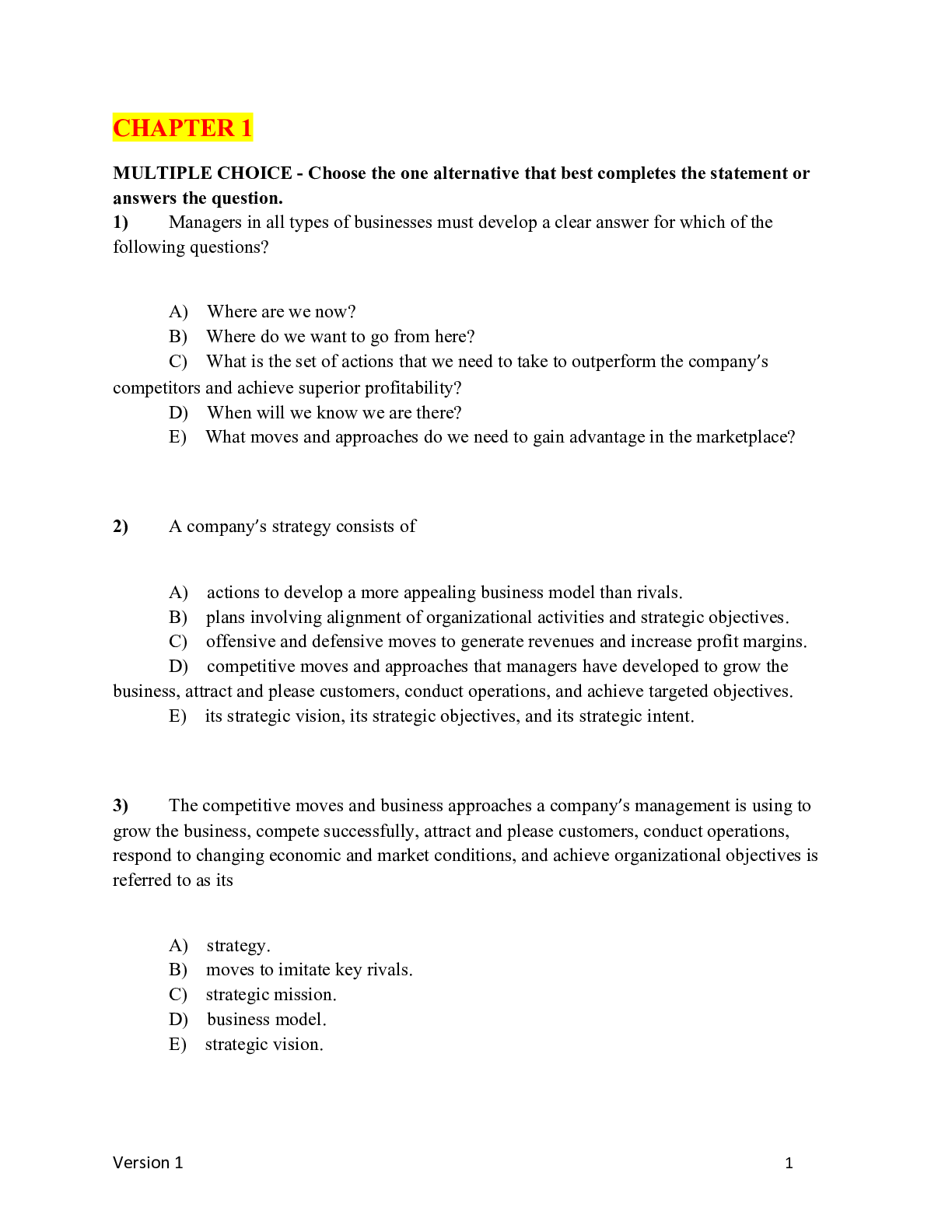
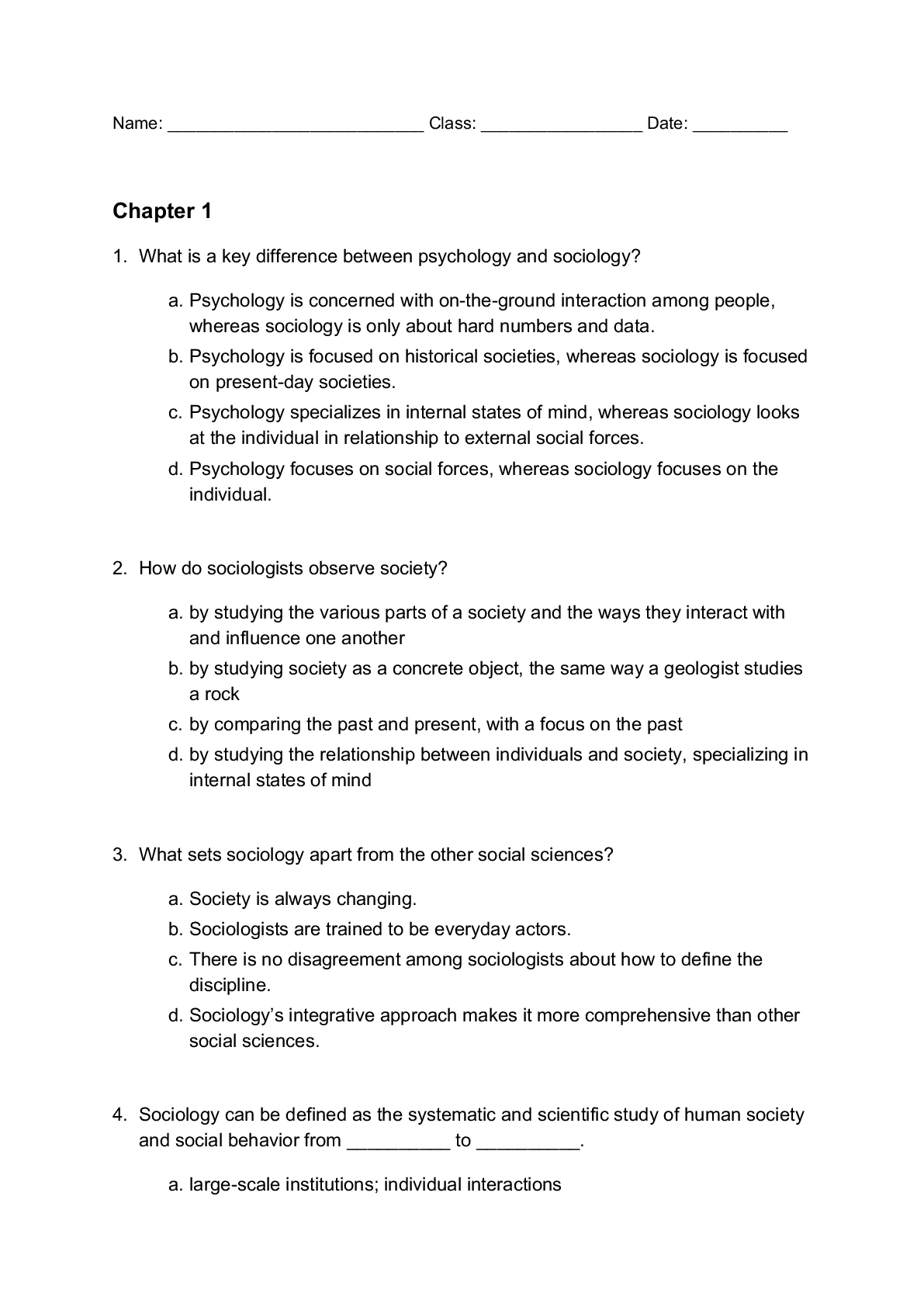




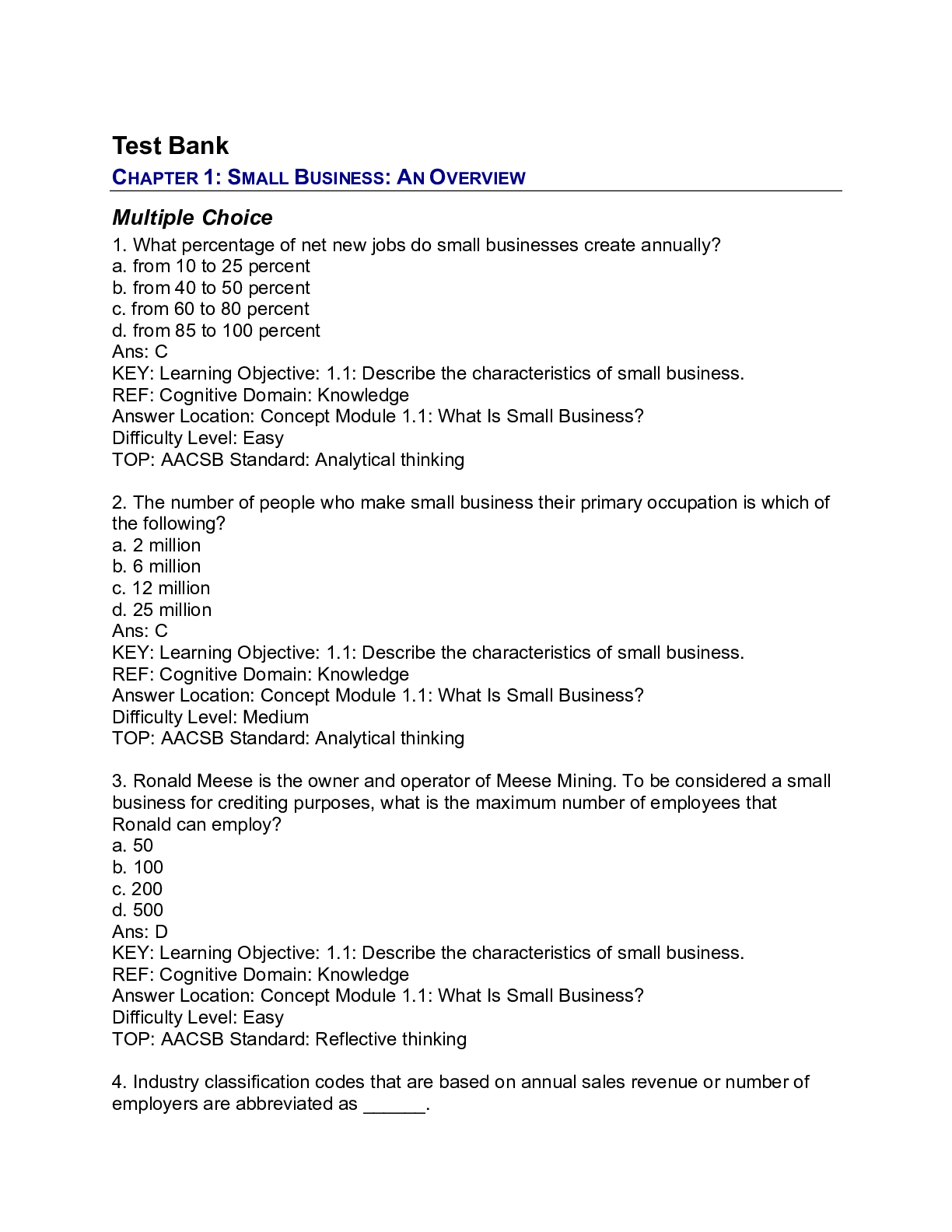






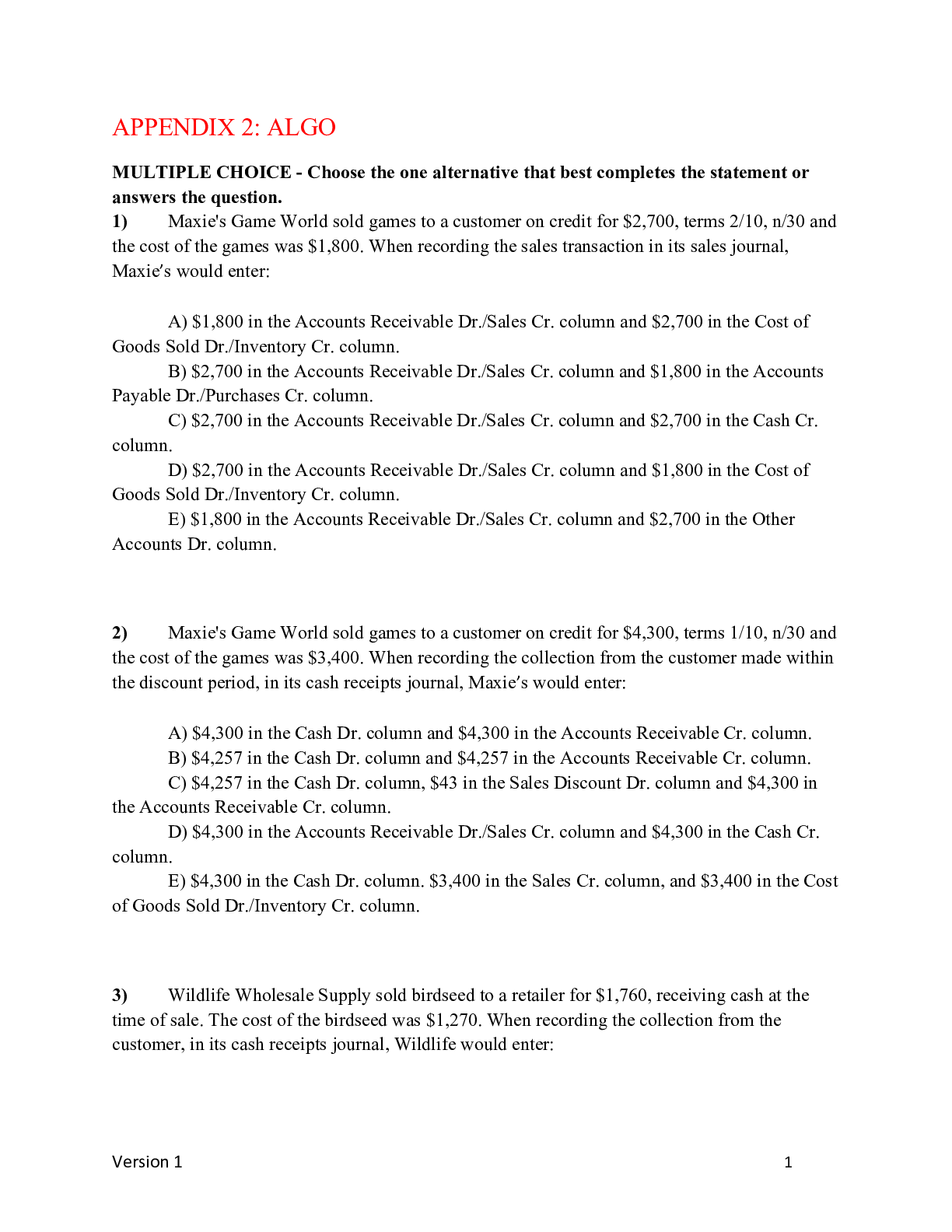
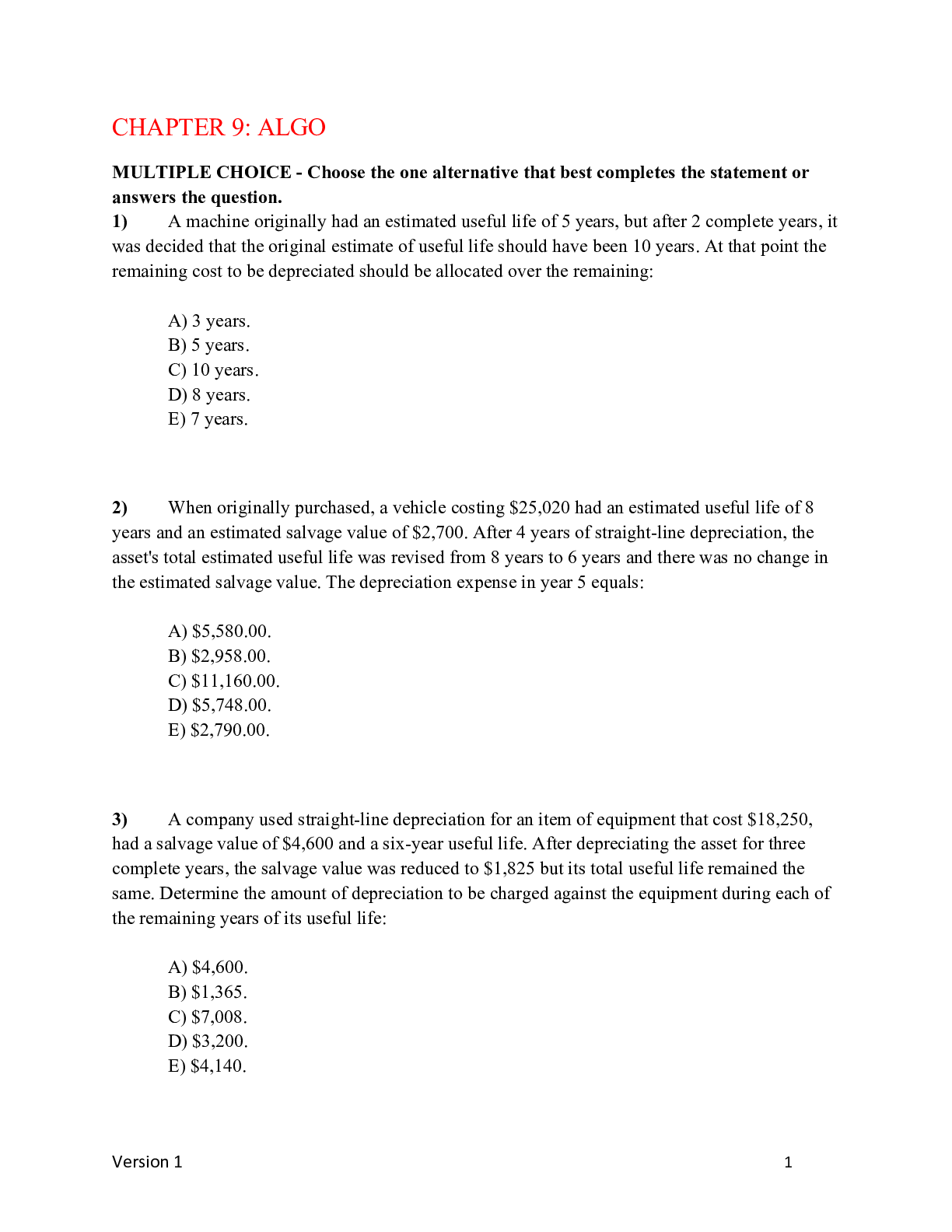


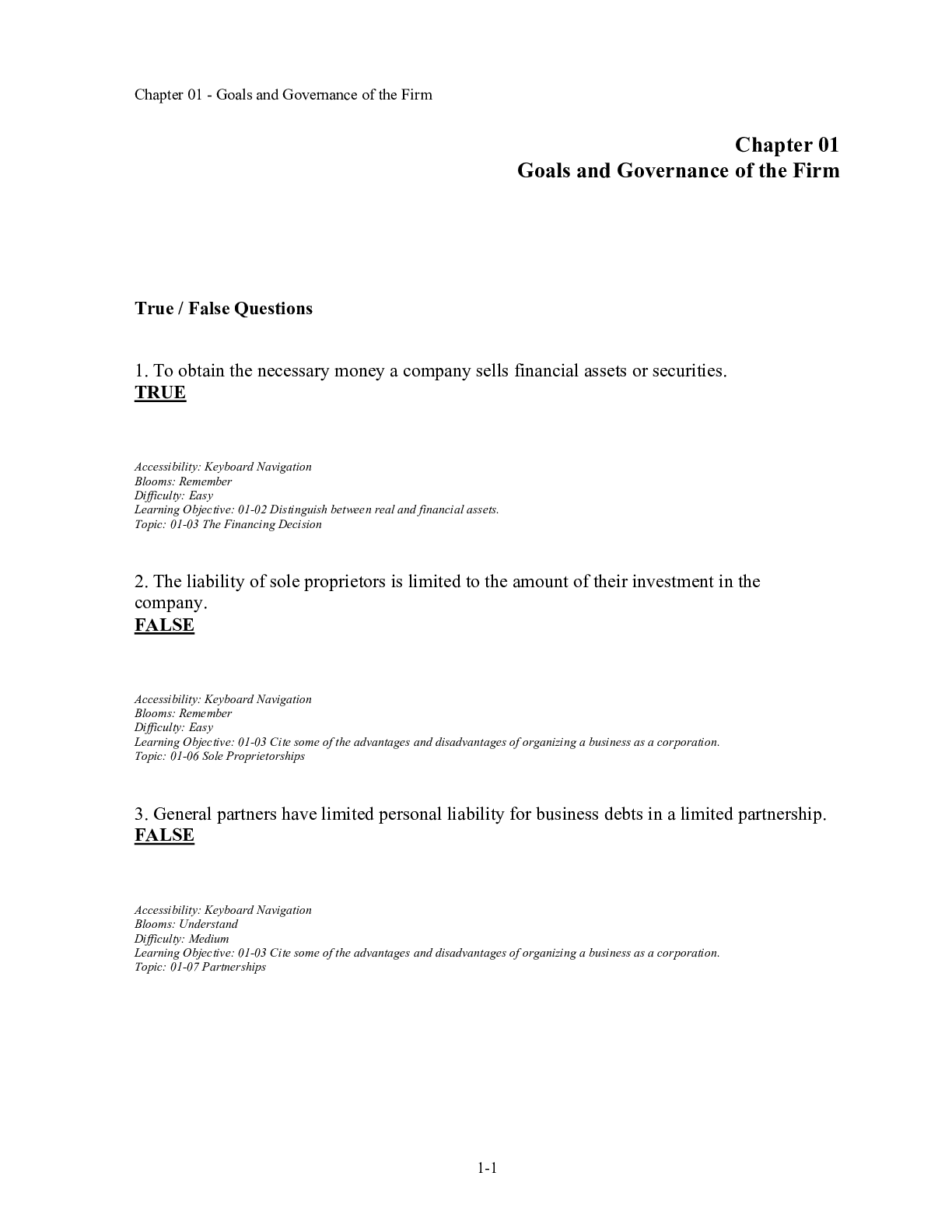
.png)


